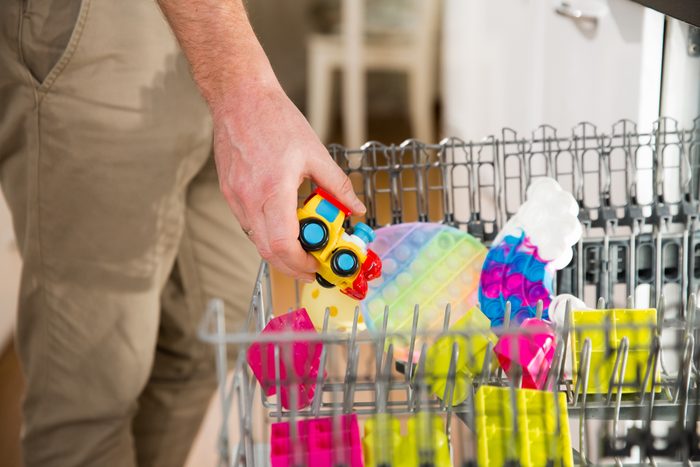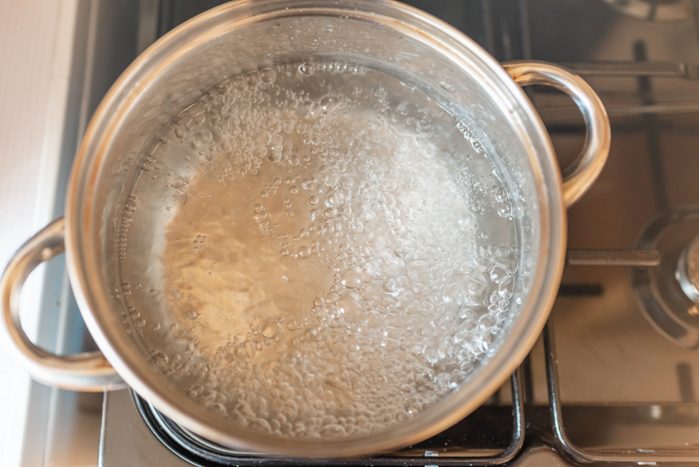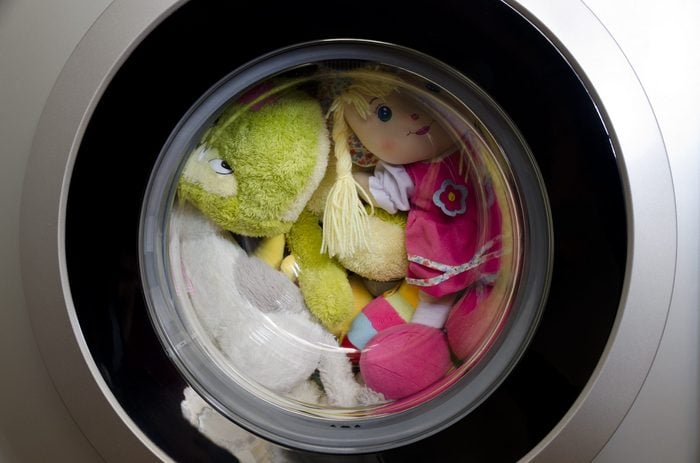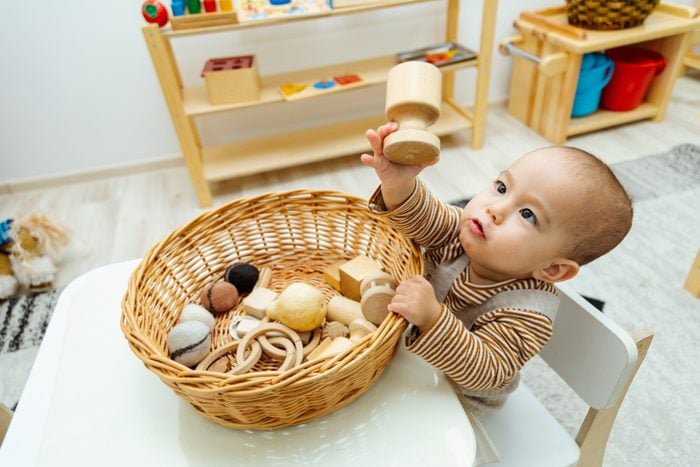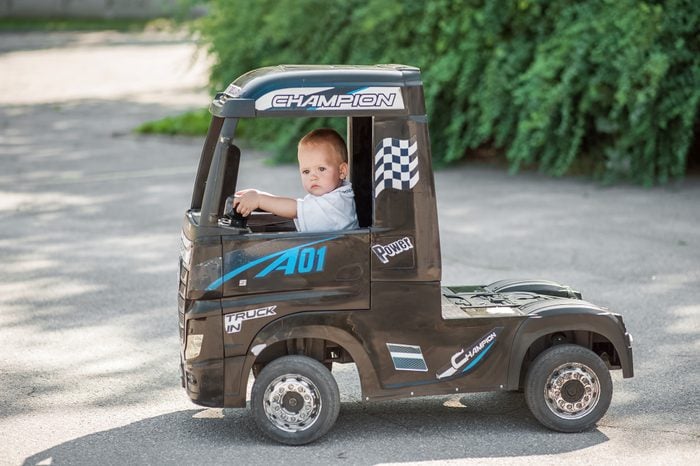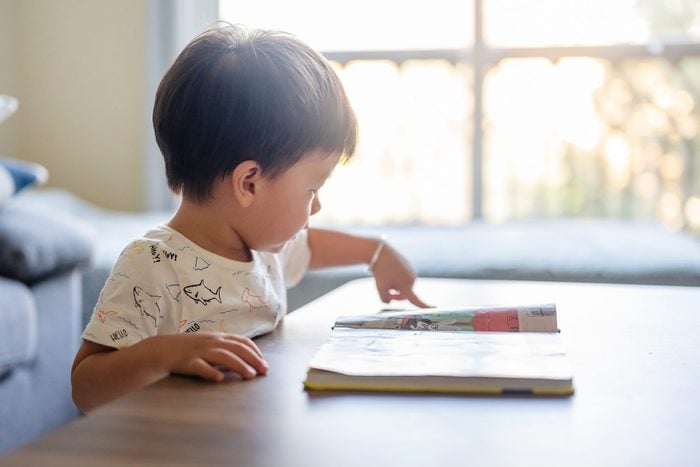Disinfect Plastic Baby Toys in the Dishwasher
Solid plastic baby toys without fabric, porous parts or holes that trap water can be sanitized in the dishwasher.
To kill most germs and bacteria, use a wash setting that’s at least 150 degrees. A sanitize or sani-rinse setting will get even hotter; Whirlpool claims that dishwashers “kill 99.999% of food soil bacteria.” But before you load all your baby’s plastic toys into the dishwasher, do a test run with the softest one, to ensure the high temperature doesn’t melt it.
You could also wash plastic baby toys by hand with an antibacterial dish soap, then submerge them in a solution of a one-quarter teaspoon household bleach and a one quart water. According to Centers for Disease Control and Prevention (CDC) sanitizing guidelines, “any remaining bleach will break down quickly as it dries and will not hurt your baby.”
You don’t even need to rinse them. Just let the items air dry on a clean dishtowel or paper towel before they go back into your baby’s hands — and mouth.
Disinfect Baby Bath Toys in Boiling Water
That floating rubber ducky is cute, but the bathwater stuck inside it can be a problem. Mold may form inside the toy and disperse in the tub during subsequent baths.
One sure and easy way to disinfect plastic and even spongy bath toys? Boil them in water for several minutes. Make sure you squeeze them with tongs as they boil, forcing out any gunky water from the inside. Give them a few more squeezes when you take them out of the water.
Alternatives include a bleach mixture at same ratios as above, or a mixture of one-half cup white household vinegar to one gallon of water. (That’s just one of many household uses for vinegar.) Just remember to give them a squeeze during and after soaking.
Disinfect Plush Baby Toys in Your Washer
Plush toys can get really dirty and funky. Fortunately, most can be cleaned and disinfected in the washing machine. Be sure to zip them into a delicates laundry or other mesh bag, or a zippered pillowcase. These allow water and detergent to flow through and permeate the stuffy. Whirlpool recommends the gentle, hand-wash or delicate cycle.
Dry the stuffed animal(s) on a low heat setting in the dryer if there are no plastic parts. You can leave the item(s) in the delicates bag if you prefer, but it’s probably not necessary.
For a delicate stuffed toy, or one with plastic parts, you can line dry it. But start by rolling the toy a few times in a towel to squeeze out excess water. And don’t rush. It must be completely dry or it can become a petri dish for mold and bacteria.
Plush toys that can’t be washed may be spot cleaned or sanitized with a garment steamer or steam cleaner. Both can reach temperatures of 220 degrees, high enough to kill any crud in the toy. Test a spot first to make sure the steam doesn’t damage the material. And, as always, allow the toy to completely dry out before returning it to your child.
Disinfect Wooden Baby Toys With Vinegar
Wooden baby toys are long-lasting and promote hands-on learning, but that’s not all. Wood is also naturally antimicrobial, meaning it doesn’t provide the same breeding ground for bacteria as fabric and plastic.
To disinfect wooden toys, wipe them down with a 1:16 mix of vinegar and water. Avoid soaking wooden toys in the vinegar solution or any other liquid; it could make the paint or clear finish peel off and leave the toy waterlogged.
Disinfect Electronic Baby Toys With Diluted Bleach Spray
Electronic toys that make noise or light up, or any toy requiring a battery, cannot be submerged in water, because the moving parts shouldn’t get wet. Instead, spray but don’t saturate these toys with a spray made of one-quarter teaspoon bleach to one quart water. A little bleach goes a long way. Then wipe them down with a soft, dry cloth.
Vinegar and water is also an option here. Just keep the liquid away from the electronic parts.
Disinfect Baby Books With Alcohol Wipes
You don’t want hardcover baby board books to get wet, but you can sanitize them by wiping them down with isopropyl alcohol wipes. A dishcloth or paper towel dabbed in a vinegar-water mix also works. The latter will leave a taste residue on books, but that’s actually an upside — as it discourages your baby from putting books in their mouth.
Books with lightweight paper covers or pages are obviously harder to clean. You can wipe down the cover of a hardcover book. But if you’re really concerned about crud on softer books, here’s a trick: Put them in the freezer for a few days to kill anything nasty that might be growing on them.

